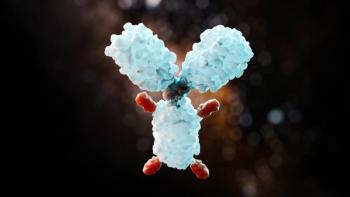
NAC: A Natural Product So Powerful It Is Used in Hospitals
The intravenous and oral form of NAC are used to protect and restore the body before and after it has been exposed to chemicals.
Natural products are a hot topic these days. As a pharmacist, I am very impressed by a natural product called NAC, short for N-acetylcysteine. This pill is available to everyone and can be purchased at virtually any health food store or pharmacy. It's made by various manufacturers and ranges in price from $0.17 to $0.99 per pill depending on the milligrams.
In the hospital, it is used in the intravenous and oral form to protect and restore the body before and after it has been exposed to certain chemicals, including radioactive dyes used to illuminate parts of the body during an MRI, and in the case of acetaminophen overdose. It’s also used sometimes to help cancer patients overcome the adverse events that may be associated with isoffamide and cyclophosphamide.
NAC is an immediate precursor to a very precious substance that our body makes. It's called glutathione. Amino acids such as cysteine, glutamate, and glycine are also natural precursors from the food we eat.
On Sept. 2, 2015, the FDA tweeted that IV glutathione was being used as a skin lightener. It restores the skin to the color of early childhood. It is not approved for use here in the United States and the
The only products on the market here in the United States are the oral and topical skin formulations or glutathione and NAC. Several oral liquid formulations of NAC have specifically marketed products to mask the unpalatable sulfur taste. The unadulterated liquid formulation can be very reminiscent of rotten egg juice.
Foods high in glutathione precursors are broccoli, cauliflower, and asparagus. Vegetables with a high sulfur content yield naturally high glutathione levels.
For people who believe they need more than what their diet can provide, NAC can be purchased in pill forms ranging from 300 to 900 mgs. Twice daily administration or three times daily administration is commonly recommended by the manufactures.
There is no recommended daily allowance for NAC, because unlike vitamins, it’s not an essential nutrient.
The dosage used to prevent radio contrast dye damage is 600 mg to 1200 mg every 12 hours for 48 hours.
Oral doses above 1200 mg per day can result in headache, nausea, abdominal pain, vomiting, constipation, and diarrhea.
People who take nitroglycerine should not take NAC unless supervised by a physician since it can cause the nitroglycerine to work more intensely and cause an unsafe drop in blood pressure.
In the hospital setting, the use of NAC yields potential benefits that outweigh the potential risks. Glutathione levels are being restored and maintained in the normal range because the toxins deplete glutathione.
Drug studies have measured the glutathione levels going down after the toxic exposure. Damage to the body and vital organs occur, usually involving the liver or kidneys depending on the toxic exposure. Studies have also measured glutathione levels going up after NAC administration and damage to vital organs is mitigated.2, 3, 4
In the skin lightening situation, normal glutathione levels are being elevated even higher. This is usually when good pills do bad things. The risk-benefit ratio is no longer the same. Treating a healthy person is very different than treating a sick person. Medical professionals take a vow never to cause harm and giving medicine to a healthy person is not the same as giving medicine to a sick person.
Vitamin C is similar to glutathione in that it is also a powerful antioxidant depleted by toxins. Smoking tobacco depletes vitamin C levels and the expert doctors at the National Institute of Health (NIH) have recommended that healthy smokers consume extra vitamin C supplement in the pill form.5 According to their website they recommend a dose of vitamin C 35 mg every day. It’s a small dose, but enough to restore the vitamin C levels to normal.
Interestingly, vitamin C is also used in the IV form as a skin lightener, often times it is combined with glutathione.
Could glutathione and it’s precursors be a key in slowing the aging process? Do high levels restore and repair damage that has already occurred? That is being investigated now. It might be too soon to recommend glutathione and it’s immediate precursors, but the data are coming in fast, thanks to the internet, newsletters, and databases.
Stay tuned, and I will keep you updated. Until then, eat lots of broccoli, cauliflower, and asparagus.
References
1.
Injectable Skin Lightening Products: What You Should Know. FDA website. http://www.fda.gov/ForConsumers/ConsumerUpdates/ucm460788.htm. Accessed Jan. 10, 2017.
2. Product Information: ACETADOTE(R) intravenous injection, acetylcysteine intravenous injection. Cumberland Pharmaceuticals Inc. (per FDA), Nashville, TN, 2016.
3. Product Information: CETYLEV oral effervescent tablets for solution, acetylcysteine oral effervescent tablets for solution. Arbor Pharmaceuticals (per FDA), Atlanta, GA, 2016.
4. Product Information: acetylcysteine inhalation solution, acetylcysteine inhalation solution. American Regent, Inc. (per DailyMed), Shirley, NY, 2014.
5. Institute of Medicine. Food and Nutrition Board. Dietary Reference Intakes for Vitamin C, Vitamin E, Selenium, and Carotenoidsexternal link disclaimer. Washington, DC: National Academy Press, 2000.
Newsletter
Stay informed on drug updates, treatment guidelines, and pharmacy practice trends—subscribe to Pharmacy Times for weekly clinical insights.
















































































































































































































